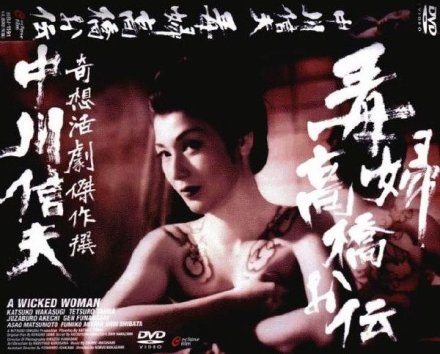On this date in 1879, Takahashi Oden was put to death for murder at Tokyo’s execution grounds — the last woman beheaded in Japanese history.
 Oden confessed to slaying her lover, and was also suspected of poisoning off her husband.
Oden confessed to slaying her lover, and was also suspected of poisoning off her husband.
This made her perhaps the most infamous of Japan’s dokufu, poison-women — a perceived epidemic of the early Meiji period. Oden’s infamy thrust her into the crime genre’s characteristic harvest pulp literature, like Takahashi Oden yasha monogatari. (Takahashi Oden, the She-Demon’s Tale)
“Oden’s body became part of a scientific discourse that worked to produce ‘knowledge’ about feminine norms based on determinist biological differences,” Sharon Chalmers observes. “Deviancy was also characterised in terms of ‘masculine’ traits … [and] female transgression was read as sexual excess.”
And the feeding frenzy of the popular press around each new dokufu only exaggerated the effect: the sexual rapacity angle moved media.*
Since Japan was all about divining the secrets of the human form from the condemned, Oden was dissected after her death.
According to Murder Most Modern: Detective Fiction and Japanese Culture, the anatomizing team was especially keen on delineating that scientific discourse of feminine deviance. And, of course, the pamphleteers were keen on publicizing it. In this case, standing as we do today outside the surgeons’ intellectual framework, we can readily discern the corpse’s role for these men as grist for the ideological mill.
Immediately following her execution, her body was taken to the hospital affiliated with the Metropolitan Police Office (Keishicho) and dissected by an army surgeon and three regular doctors. Some accounts of this autopsy reveal that these doctors focused their attention on Oden’s genitalia during the procedure. Her bizarre autopsy is said to have been prompted by a newly emerging field of study called zokaki ron, roughly “the study of (re)productive organs.” A cross between sheer superstition and legitimate study of anatomy, zokaki ron was getting much scholarly as well as popular attention as one of the branches of science recently introduced from the West. After the autopsy, the primary operating surgeon, Osanai ken (1848-85), made the following report on Oden: “Abnormal thickness and swelling of the labia minor. Over-development of clitoris. Enlargement of vagina.” For Osanai — a skilled physician who is credited with having performed the first operation in Japan with chloroform and even makes an appearance in Shibue Chusai (1916), a novel by Mori Ogai (1862-1922) about a doctor of Chinese medicine in late Edo period Japan — such physical abnormalities explained Oden’s violent nature: after all, she ruthlessly slit her victim’s throat and left him in a pool of his own blood, and it took several blows for the authorities to execute her as she kicked and screamed in resistance.

Autopsy of Takahashi Oden, from Takahashi Oden yasha monogatari.
Though a lot of water has passed under the bridge since Oden’s day, she was the subject of a 1958 Nobuo Nakagawa film, Dokufu Takahashi Oden.

Katsuko Wakasugi as the title character in Dokufu Takahashi Oden.
* For more on the Oden story as crime literature, see Mark Silver’s “The Lies and Connivances of an Evil Woman: Early Meiji Realism and ‘The Tale of Takahashi Oden the She-Devil'” in Harvard Journal of Asiatic Studies, June 2003 — or, his book Purloined Letters: Cultural Borrowing and Japanese Crime Literature, 1868-1937.
On this day..
- 1964: Nguyen Van Nhung, Diem executioner - 2020
- 1821: Henry Tobin, extortionist - 2019
- 1851: Ruben Dunbar, Destructiveness and Combativeness - 2018
- 1731: Alejo Calatayud, Mestizo - 2017
- 1550: Four Anabaptist martyrs at Lier - 2016
- 1679: Robert Foulkes, adulterous minister - 2015
- 1902: A day in the death penalty around the Pacific Northwest - 2014
- 1923: Eligiusz Niewiadomski, assassin-artist - 2013
- 1632: Aris Kindt, Rembrandt subject - 2012
- 1955: Moshe Marzouk and Shmuel Azar - 2010
- 1945: Private Eddie Slovik, the last American shot for desertion - 2009
- 1606: Guy Fawkes and other Gunpowder Plot conspirators - 2008
